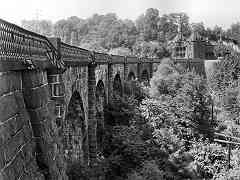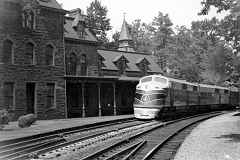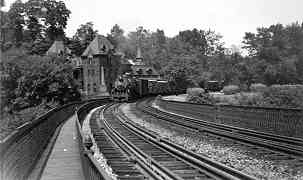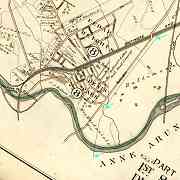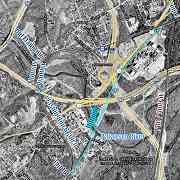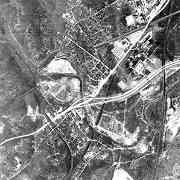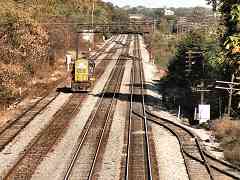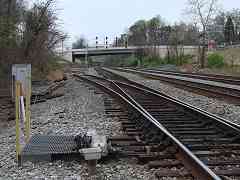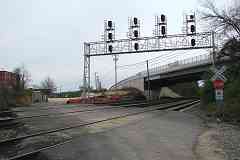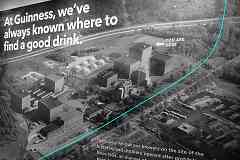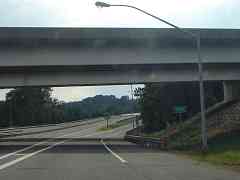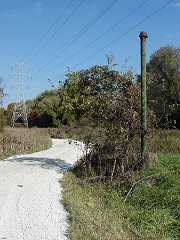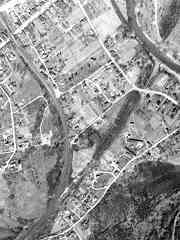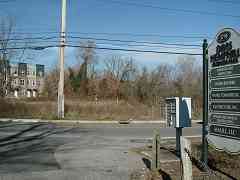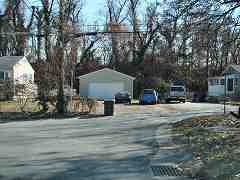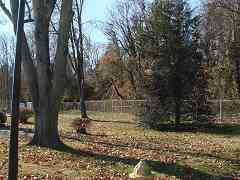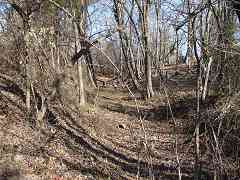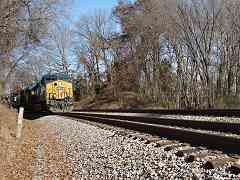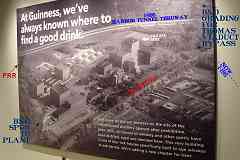|
South of I-895, the bypass would have progressed through surroundings that
became part of Patapsco State Park. The area between the interstates and
the Patapsco River is a limited-access, swampy lowland traversed
by highways, utility lines, and crude maintenance roads.
To boost the tracks over the swamp, B&O used dirt it had excavated for
the Howard Street Tunnel as fill. The railroad later removed most
that soil for use elsewhere which is why you now find ponds along the
bypass route north of the Patapsco River.
Note milepost values near the Viaduct have been distorted by modifications
to the preferred route from/to Baltimore. What is marked trackside as
Old Main Line milepost 7 is closer to 7.2, which is also where Washington
Branch (CSX Capital Subdivision) milepost 9 can be found. When B&O
opened the Camden Cutoff, roughly two miles were shaved from the distance,
but Washington Branch mileposts were never updated.
Detour:
Camden Cutoff tour at this site
| 